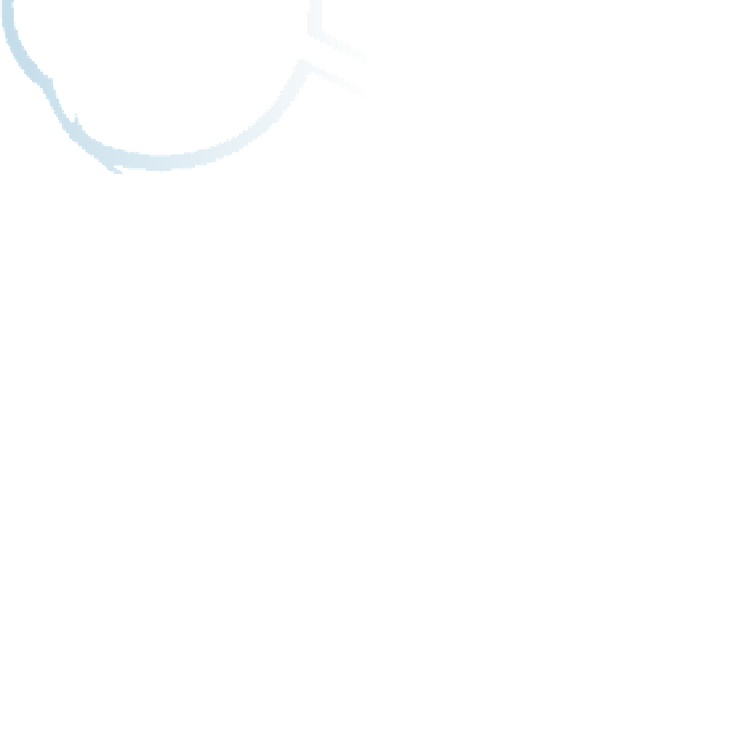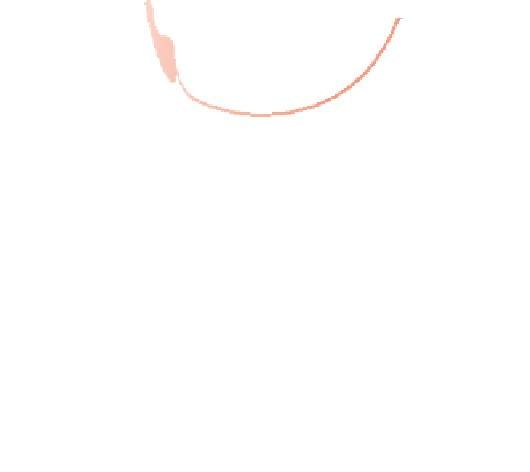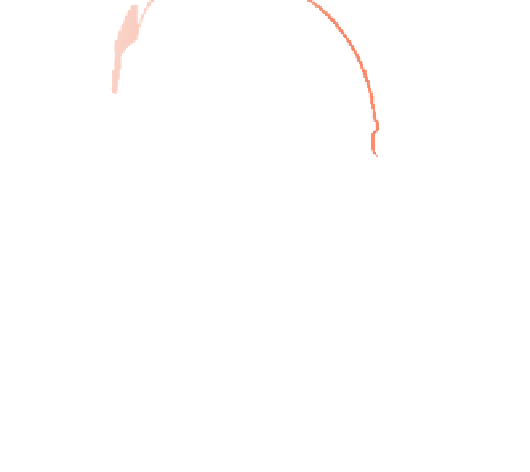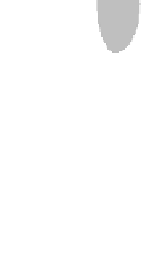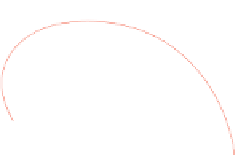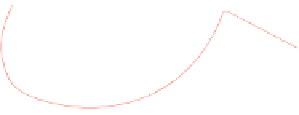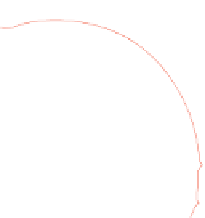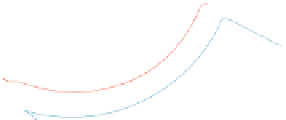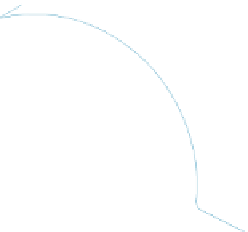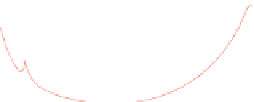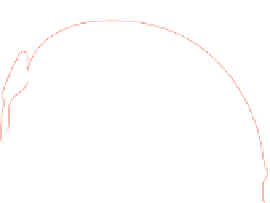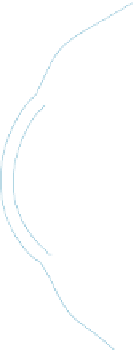Graphics Reference
In-Depth Information
Despite our limited understanding of the visual system, there are physical charac-
teristics of the eye that limit what it can possibly do, and these can help govern the
design of graphics systems. For instance, there is a smallest detectable brightness
difference, and a smallest angular resolution for the eye. A display whose pixels
could show brightness differences smaller than those, or whose pixels subtended
an angle only 1
10 as large as this smallest angular resolution, would be unneces-
sarily complex. We'll regard the eye as stopping at the optic nerve, with the nerve
and the visual cortex constituting the remainder of the visual system.
/
At a large scale, the eye consists of a globe-shaped object, held in place by the
skull, various muscles that are attached to it, and other soft tissue surrounding it
(see Figure 5.4).
The control of the rotation of a pair of eyes is coordinated by our visual system
so that the received pattern of light on the retinas of the eyes can be integrated
to form a single coherent view of the world; the left-eye and right-eye views of
a scene are generally different, and the
disparity
between these views helps us
estimate the depth of objects in the world. (You can experiment with this easily:
Mark a spot on the wall of a room, and place several objects more or less between
you and this mark, at different distances. While staring at the mark, cover first one
eye and then the other, and notice how the left-right positions of objects near you
seem to move as you switch eyes.)
A
(a)
B
At a coarse level, the path from an object that's either emitting light (a light
bulb) or reflecting it (a book on your desk) to your retina—through the pupil and
lens and vitreous humor (the gel-like liquid in the eyeball)—can be modeled by
a simple lens, mounted between the light-producing object and an imaging plane
(see Figure 5.5). Light from an object is emitted along many rays, which hit dif-
ferent points of a lens and are refracted (bent) as they pass into and out of the lens,
(b)
Figure 5.5: Light from point A is
in focus when it arrives at the sur-
face at right; point B is out of
focus.
Vitreous humor
Aqueous
humor
Cornea
Lens
Retina
Fovea
Visual axis
Pupil
Iris
Optic disk
Optic
nerve
Orbital muscles
Figure 5.4: Light enters the eye through the pupil, then passes through the lens and vitreous
humor, and arrives at the retina.


































































































































































































































































































































































































































































































































































































































































































































































































